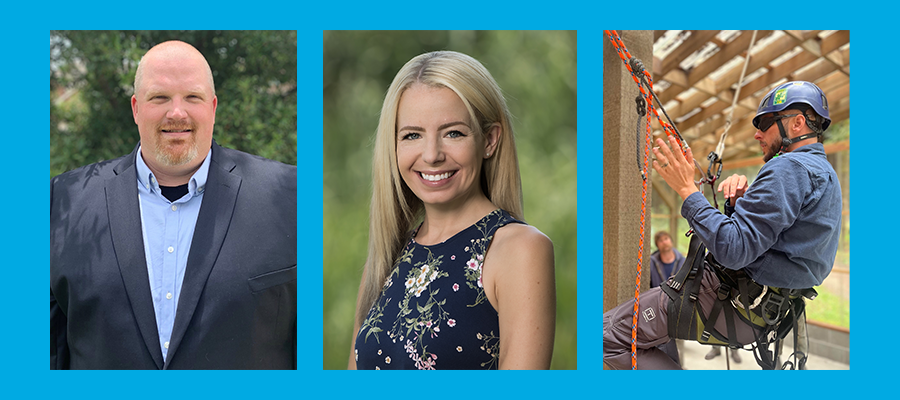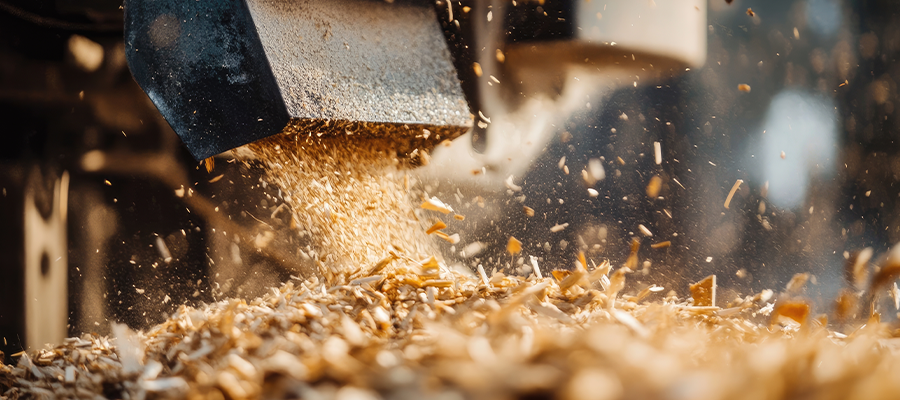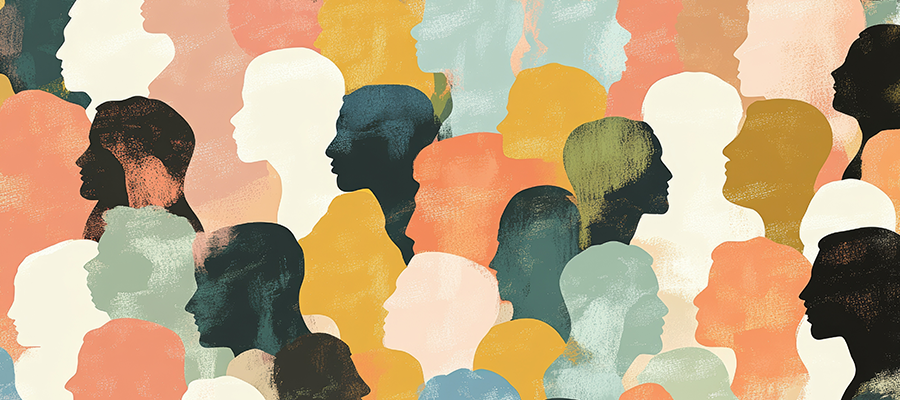- Vegetation Management Services
- In Your Neighborhood
- About
- Careers
- Webinars
- Articles
Reflections from Will Nutter Silver Shield Award Recipients

Reflections from Will Nutter Silver Shield Award Recipients
By Bob Urban, Senior Manager, ACRT Services
In an industry where the stakes are high and every decision can have life-altering consequences, leadership in utility arboriculture isn’t just a managerial function; it’s a calling. Nowhere is this more evident than in the recipients of the Will Nutter Silver Shield Award, a recognition that honors frontline safety champions who go above and beyond in protecting the people they serve and lead.
Created in 2016 by the Utility Arborist Association (UAA), the Silver Shield Award originated from a proposal by Will Nutter, then Chair of the UAA Safety Committee. Will recognized the need for a distinction that celebrated those who may not always sit in corner offices or hold executive titles but who wield enormous influence over safety culture on the ground. These are the crew leads, forepersons, trainers, and quiet influencers who turn “safety” from a policy into a practice, day in and day out.
Will’s passion for safety was palpable. He believed in collaboration over competition and worked tirelessly to bring the industry together, especially through the development of UAA Safety Summits. These gatherings emphasized education, best practices, and proactive conversations — all to reduce risk and save lives.
Tragically, on Sept. 16, 2021, Will passed away following a motorcycle accident. Just days later, the UAA Board of Directors unanimously voted to rename the award in his honor. It was a fitting tribute to a man whose dedication to safety transcended job titles and whose vision continues to shape the industry.
Nearly a decade since its inception, the Will Nutter Silver Shield Award serves as a standard for what safety leadership should look like. As someone who was honored as a 2021 recipient, I have experienced firsthand how powerful and humbling this recognition can be. When I was informed I had been selected, my first reaction was that I felt undeserving. The award, to my knowledge, is a true peer recognition, offered by others in the industry who took note of what I was doing. That awareness struck me deeply.
I wear my Shield sparingly — only during key presentations or at special industry events. It’s not a trophy to show off, but rather a reminder. For me, it symbolizes the responsibility to act in ways that reflect the values behind it. My actions, attitudes, and leadership around safety should speak for themselves. The Shield reminds me to use my life and career experience to help others return home safely each day, and to ensure I do the same.
A Shift Toward Root Cause Thinking
Reflections from Jerry Staton, Senior Operations Manager, ACRT (2023 recipient)
When Jerry Staton was honored with the Silver Shield Award, he saw it as a call to action. In his words, “This isn’t just recognition, it’s a responsibility to keep raising the bar.”
Jerry notes a profound shift in the way safety incidents are approached. “Years ago, we’d zero in on the immediate cause. If someone got into a fender bender, we’d talk about distracted driving,” he recalls. “But now, we’re asking deeper questions. Why did they feel the need to check their phone? Was there pressure? Were they distracted by something at home?”
This evolution toward human performance thinking allows organizations to understand the broader context around safety events. “Digging into root causes helps us train better, respond better, and support our people better,” Jerry says. “It also builds trust. When workers know you’re not just looking to punish them, but to understand and help, they’re far more likely to speak up and engage.”
For Jerry, the change isn’t just procedural — it’s cultural. “Safety has to be part of how we talk, think, and lead. It’s not a department. It’s a mindset.”
Production Pressure: The Elephant in the Bucket Truck
Insights from Kevin Myers, Training Supervisor, ACRT Arborist Training (2016 recipient)
Kevin Myers doesn’t mince words when it comes to the challenges facing the industry. “The biggest threat to safety? Production pressure,” he says flatly. “Everyone, from utilities to contractors, is trying to do more with less. That pressure trickles down, and it puts crews in harm’s way.”
He describes an industry landscape where companies often underbid each other to win contracts, leading to cuts in training, oversight, and equipment. “It’s an unsustainable model. And it’s dangerous,” Kevin warns.
His proposed solutions are both bold and pragmatic. First, he wants to see arboriculture recognized legally as a skilled trade. “We don’t let just anyone wire a house. Why should someone with no formal training be allowed to operate a chainsaw next to live wires?”
Second, he believes insurance companies have a role to play. “If insurers audited safety programs and adjusted premiums accordingly, you’d see a real incentive for companies to invest in doing things the right way.”
Despite the challenges, Kevin remains hopeful. “We know what needs to be done. We just need the willpower — no pun intended — to make it happen.”
Leading with Empathy, Empowering with Technology
Thoughts from Adrienne Jones, Safety Manager, ACRT (2023 recipient)
Adrienne Jones brings a holistic lens to the conversation, one that includes not only physical safety but mental wellness, communication, and culture. “Mental health is safety,” she says. “If someone is distracted, anxious, or burned out, their judgment suffers. Their awareness suffers. That can be the difference between going home safe or not.”
Adrienne has been instrumental in integrating wellness and support systems into safety programs. “We now treat mental health with the same seriousness as PPE or hazard assessments,” she says. “And it’s making a difference. People are speaking up more. Teams are more connected.”
Her leadership philosophy is grounded in empathy and trust. “I’ve shifted from just giving instructions to building relationships. I check in regularly, I listen, and I create space for feedback. That’s how you build a safety culture that lasts.”
Adrienne also highlights the role of technology in simplifying safety processes. “We’ve adopted apps that allow for real-time reporting of near misses, electronic job safety analyses, and field-based feedback. It’s user-friendly and meets workers where they are — on their phones.”
Her advice to others? “Don’t overcomplicate it. Keep training relatable. Use real stories. And most of all, show your team that you genuinely care.”
Common Threads and a Shared Purpose
While each Silver Shield recipient has their own journey, a few key themes emerge across their stories:
- Safety is Human: It’s not about perfection, it’s about people. Understanding the full context behind actions, both good and bad, leads to smarter decisions and better support.
- Communication is Key: Whether through storytelling, technology, or open-door policies, leaders must create environments where safety is openly discussed, not feared.
- Training Must Be Practical: Long, irrelevant modules don’t engage workers. Real-world examples, mentorship, and peer-led discussions are far more impactful.
- We Must Address Systemic Issues: From contract models to certification standards, the industry needs structural changes to prioritize safety over production.
- Empathy is a Superpower: More than rules or checklists, what often drives safe behavior is knowing someone has your back.
Looking Forward: Carrying the Shield
The Will Nutter Silver Shield Award does more than recognize excellence: it defines it. It’s a call to lead with commitment, to elevate those around you, and to challenge the status quo when lives are on the line.
Honoring Will’s legacy means continuing to uphold the values he championed: collaboration, care for others, and a steady focus on doing things the right way. These principles should guide how we work, how we lead, and how we look out for one another in the field.
In memory of Will and in celebration of all who carry his torch, let’s continue the work. Because safety is not a destination. It’s the path forward.
This article was originally published in the 2025 July/August edition of the UAA Newsline.
Related Articles

By C. Troy Ross, President, ACRT and ACRT Pacific On a chilly Monday morning, a utility vegetation management crew gathers for their weekly briefing. Instead of launching into instructions, their supervisor begins by asking each team member how they’re doing. One mentions a child’s illness, another shares excitement about a certification course they just completed,[...]
Read More
By Aana Agrawal, Sustainability and Resilience Manager, EnviroScience The utility vegetation management (UVM) sector plays a crucial role in ensuring the smooth transmission of power across regions and cities by keeping plant growth under control within the vicinity of transmission and distribution lines. However, unrefined vegetation maintenance practices often focus on trimming, cleaning, and disposal[...]
Read More
By Ryan Meccage, Business Development Manager, ACRT Services In an age dominated by smartphones, constant connectivity, and algorithm-driven content, we’ve never been more digitally immersed. Yet somehow, we’ve also never felt so far removed from the natural world beneath our feet. The urge to step away from screens and re-establish a deeper connection with nature[...]
Read More
By Raul E. Perez Jr., Safety Manager, ACRT Pacific Mental health and wellness are topics that resonate deeply with many people, especially those who have faced personal struggles throughout their careers. One message I revisit often is: “If you don’t make time for your wellness, you will be forced to make time for your illness.”[...]
Read MoreRecent Posts
- Servant Leadership in Utility Vegetation Management 12th Nov 2025
- ACRT Pacific Honors Our Veterans 10th Nov 2025
- Rian Owens Receives Safety Challenge Coin 05th Nov 2025